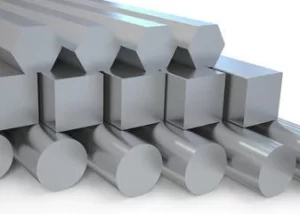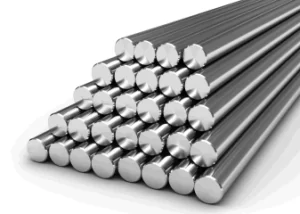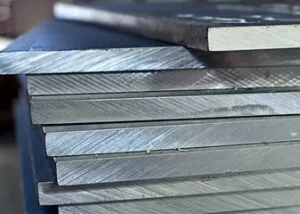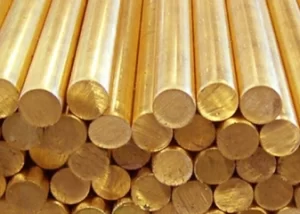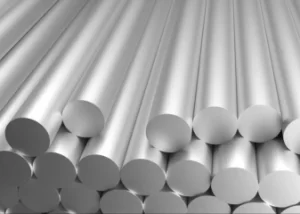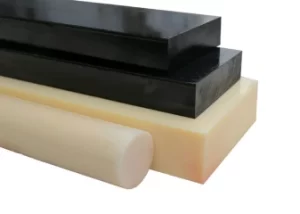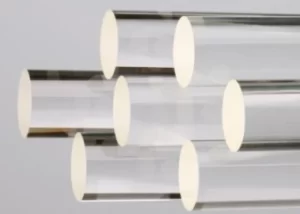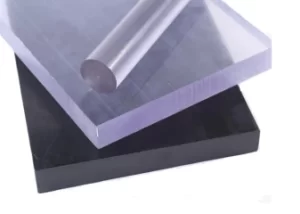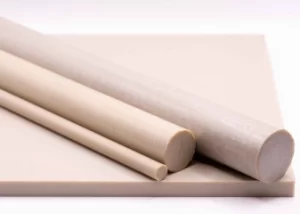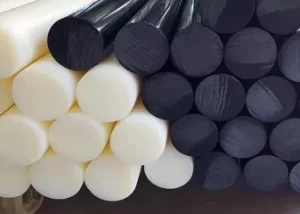CAPABILITIES
CNC Milling Service
Get high-quality complex parts with 3, 4, and 5-axis CNC milling Services. Our milling facility can convert intricate designs with high precision at competitive prices, whether you need prototypes or full-scale runs.
- Tolerances as low as ±0.0002″ (0.005mm)
- Lead time one day for quick projects
- 3, 4, and 5-Axis Milling
- Custom milling cutters for complex parts






All uploads are secure and confidential.
Prolean’s CNC Milling Service

3 Axis CNC Milling
Looking for precision and affordability in your manufacturing process? Look no further than 3-axis CNC milling. This technology provides accurate results for simple parts without breaking the bank.
Suggest Industry Application:
Industrial Equipment
Consumer Products Industry
Electronics Industry

4 Axis CNC Milling
4-Axis CNC Milling delivers precise, complex machining at an affordable price. Ideal for advanced designs, it offers greater accuracy than 3-axis milling without a high cost.
Suggest Industry Application:
Automotive CNC milling
Medical CNC Machining
Communication

5 Axis CNC Milling
“5-Axis CNC Milling provides top-tier precision for complex designs, maintaining cost-effectiveness. It’s a step beyond 4-axis, offering advanced machining with great accuracy.”
Suggest Industry Application:
Aerospace
Robotics
Semiconductor
Our CNC Milling Service

CNC milling involves feeding rotating milling tools with multiple cutting points to remove the material and shape the stationary workpiece. Depending on the axis capabilities, the spindle can follow complex tool paths and accommodate various types of tooling.
At ProleanTech, we have advanced CNC milling machines with 3, 4, and 5-axis capabilities. Our control system takes the feedback to adjust the process. It allows us to get the part that is exactly according to the designed specifications.
Consequently, our milling equipment can execute precise drilling, boring, reaming, plane milling, bevels, grooves, surfaces (cams), and tapping designs in various workpieces. Our engineers have experience working on both industrial and commercial milling projects.
We understand the importance of surface quality in critical applications. Our as-machined finish archives Ra 3.2 or better, whereas our finishing options allow you to customize the surface of your parts!


Our Custom CNC Milling Capabilities
| Parameter | Specification |
| Part Size | 2000 mm x 1500 mm x 300 mm |
| Minimum Wall Thickness | 0.8 mm (metals), 1.5 mm (plastics) |
| Linear Tolerances | ±0.0002” (0.005 mm) |
| Minimum Feature Size | 0.5 mm or Ø 0.50 mm |
| Minimum Cutting Depth | 0.3 mm |
| Cavity Depth | 4x width (w) |
| As Machined Finish | Ra 125 or better |
| Undercut Width (T-slot) | 3-40 mm |
| Complex Features | Curved surfaces, undercuts, deep cavities, grooves, complex contours, asymmetrical features, etc. |
You Have a Great ,We are Here to Help !
Try Prolean Now!
How to Order Parts?
Get a free quote from a real engineer; once we receive your design, our engineer will review it and send you a quote as fast as one hour.

Get A Quote Immediately
Upload your design or email our engineer directly and get your quotes as fast as one hour.

Start Production
Your parts will be made once your orders are confirmed. Besides, you will get real-time order updates of the production status from our order tracking system.

Receive Your Part
After all parts pass QC inspection, they will be well packed from transportation accidents. Then, your custom parts are delivered straight to your doorstep.
How Does CNC Milling Work?


The working of CNC milling involves computer numerical control for tool movement, milling variables, and other auxiliary controls. Meanwhile, the rotating tool follows the pre-determined path and removes the material across the workpieces.

- Part Designing:
Creation of detailed 3D models using CAD software to specify dimensions and features, in any formats of WG, DXF, STL, IGES, STEP, OBJ, 3DM, or SLDPRT.

- G and M Codes:
CAM or similar software converts 3D models into CNC readable G and M codes to control toolpaths and actions.

- Tool Setup and Alignment:
Precisely securing and aligning the tool in the spindle, and workpiece in the clamp or vices.
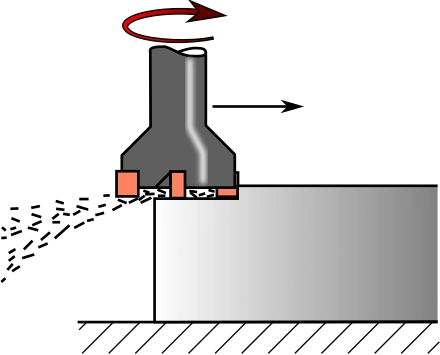
- Milling Execution:
Finally, the machine starts after setting the position of the workpiece and tool contact. Then, it follows the tool path until the desired shape is formed.
CNC Milling Material Options
Metal CNC Milling
Aluminum Alloys
Aluminum Alloys
Aluminum alloys are known for being lightweight, having corrosion resistance, excellent thermal conductivity, and strengths (vary on alloying elements). They are highly machinable and offer high production speed.
- Grades: 2007, 2017A, 5083, 6060, 6061, 6082, 7075, etc.
- Applications: Aerospace components, automotive parts, sheet metal products, structural parts.
Stainless Steel Grades
Stainless Steel Grades
Stainless steel is one of the most common metals used in CNC machining. Steel alloys provide corrosion resistance, high mechanical strength, ductility, and excellent machinability.
- Grades: 303, 304, 316L, 316Ti, 304L, etc.
- Applications: High-strength and durable parts for automotive, food processing, medical equipment, etc.
Steel Grades
Steel Grades
Steel grades provide high tensile strength, good plasticity, and varying hardness & ductility. The machinability also varies on particular alloy grades. Steel CNC machining produces durable, wear-resistant, high-strength, and heat-treatable parts.
- Grades: S235JR, C45, C40, S355J2G3, 90MnCrV8, 16MnCr5, 25CrMo4, 42CrMo4, etc.
- Applications: Automotive parts, machinery components, structural applications, tool and die manufacturing.
Brass Grades
Brass Grades
Brass is a copper alloy that offers good conductivity, formability, strength, and corrosion resistance. Brass grades are also easy to machine and the machined parts can be solder and braze. easily.
- Grades: Ms58 / CuZn39Pb3
- Applications: Electrical and thermal components, decorative items, etc.
Titanium Grades
Titanium Grades
Titanium grades are renowned for exceptional strength-to-weight ratio, corrosion protection, and biocompatibility. The machining of titanium is used for lightweight and durable parts that can withstand harsh environments.
- Grades: Grade 2 / Grade 5 (Ti-6Al-4V)
- Applications: Aircraft structural parts, medical implants, oils and gas structures, and high-stress components.
Plastic CNC Milling
ABS
ABS
ABS is popular in CNC machining due to its high tensile strength and toughness. It can create parts with excellent impact-resistant, wear-resistant, flame retardantdency, and also leaves good as a machined finish. It is often used as a metal replacement in some automotive and marine applications.
Acrylic (PMMA)
Acrylic (PMMA)
Acrylic or PMMA is a transparent and tough thermoplastic with excellent surface hardness, weather resistance, wear and abrasion resistance, and chemical inertness. The machining of acrylic surfaces can weaken the transparency, but further surface polishing can achieve that. Acrylic is ideal for applications requiring optical transparency or as a cost-effective alternative to polycarbonate.
Polycarbonate (PC)
Polycarbonate (PC)
Polycarbonate is also a transparent plastic but is more durable and shatterproof, than acrylic. It is a UV-stabilized and flame-retardant material. While machining, the PC is prone to stress cracking and requires slow feed rates and sharp tools The use of Polycarbonate machining is widespread, in food and beverage, packaging, medical devices, eyewear, electronics, etc.
PEEK
PEEK
It is high-performance CNC plastic with excellent mechanical strength, fatigue resistance, chemical resistance, and thermal stability. But it can be more expensive than other plastic materials. Some application examples include tubes, bearings, seals, valves, and medical implants.
Polypropylene (PP)
Polypropylene (PP)
Polypropylene is a CNC plastic material used in applications requiring high elongation and low flexural modulus. It has a transparent black-and-white appearance. Machining PP is mainly used for prototypes and large-size products like storage items.
More Material Options
CNC Milling Part Finishing Options
The custom CNC milling parts can be finished using different techniques to achieve specific surface properties and appearance. At ProleanTech, we have various surface finishing options for metal milling and plastic milling parts, tailored to your needs.
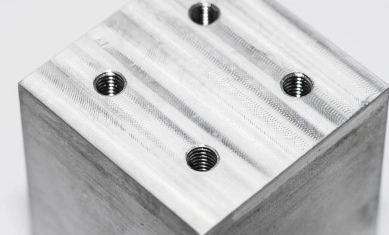
Standard (As-Machined)
This finish refers to parts just after the machining process, sometimes followed by minor grinding. It contains tool marks, small burrs & chips, but provides tight tolerances. The roughness can be as low as 3.2 μm. This finish is suitable when aesthetics is not a requirement.
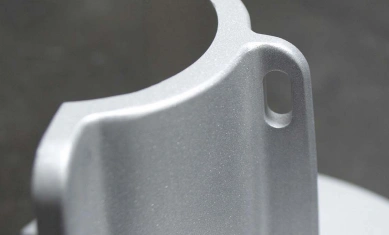
Bead Blasting
Bead blasting strikes the tiny glass, ceramic, or other beads on the machined surface at high pressure to remove tool marks, burrs, chips, and other surface irregularities. It produces a light and smoothie texture with an attractive appearance.
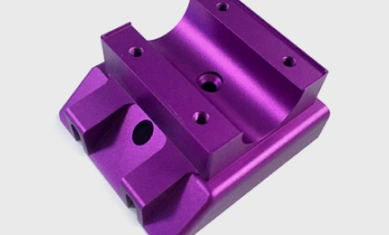
Anodized (Type II Or Type III)
The CNC-machined aluminum or non-ferrous parts can be anodized, which refers to adding and protective oxide layer on their surface. Type II is clear and color anodizing, whereas type III (MIL-A-8625/MIL-PRF-8625) refers to hard coating. Anodized surfaces resist harsh environments and save the parts from corrosion, wear, and surface degradation.
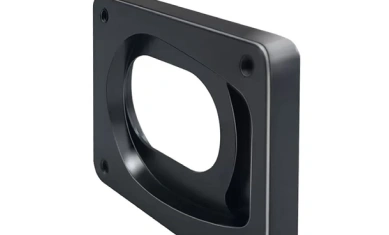
Powder coating
It is the electrostatic deposition of a thin powder layer(powder of epoxy, polyester, etc) and curing at high temperature, up to 400. Powder coat surfaces are highly corrosion-resistant and can be achieved in any color. It is applicable to all material-type machine parts with complex geometries.
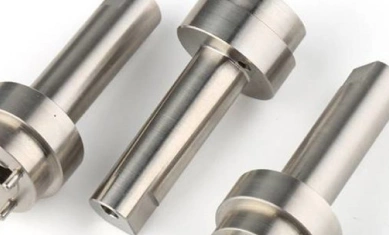
Polishing
Polishing can be applied through electrochemical and mechanical methods. It produces a smooth and fine, mirror-like finish with Ra as low as 0.3 μm. This surface finish is preferred for machined parts if low-surface friction is essential for performance or aesthetics is important.
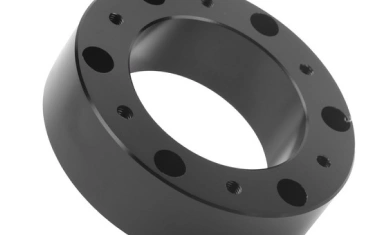
Black-Oxide
Black oxide is a surface treatment for ferrous materials that creates a sleek black appearance and offers mild corrosion resistance. It chemically converts the metal surface into an oxide layer, preserving tight tolerances. This finish is ideal for precision components where a low-reflective, durable surface is desired.
Try Prolean Now!
Comparison with Other Manufacture Processes

CNC Milling Vs Turning
The CNC turning process involves a rotating workpiece, where a single-point stationary cutting tool feeds itself and removes the material for the desired shape. It excels in producing cylindrical parts and creating linear features on their surface.
On the other hand, CNC milling offers superior versatility, the creation of intricate and multi-axis geometries, such as complex contours, slots, and holes. Unlike turning, milling is not limited to cylindrical shapes, it can handle irregular geometries with tight tolerances and smooth surface finishes.

CNC Milling vs. EDM
Unlike CNC milling, EDM is the non-shear cutting method. It uses a workpiece and cutting tool in a dielectric setup, where high voltage causes electrical discharges, and the electrode shapes the work through the material eroding. EDM is a specialized technique for micro-machining, such as small holes, slots, cavities, etc.
Comparation Table
| Feature | CNC Milling | CNC Turning | EDM |
| Geometrical Features | Complex contours, slots, holes, undercuts, pockets, 3D surfaces, etc. | Cylindrical shapes, tapers, threads, chamfers, etc. | Internal channels, deep cavities, small holes, sharp edges, etc. |
| Tolerance | ±0.01 mm | ±0.02 mm | ±0.002 mm |
| Material Flexibility | Various metals, plastics, and composites. | Primarily metals, a few plastics | Electrically conductive metal and alloys only |
| Production Speed | Moderate to high | High | Slow due to detailed |
| Tooling Options | More diverse: End mills, face mills, ball mills, drills, reamers, etc. | Turning tools, inserts, boring bars, grooving tools, etc. | Mainly wire and sinker electrodes |
| Complex Detailing | High | Moderate | High, but small-size features only |
| Application Examples | Fixtures, brackets, parts, medical implants | Shafts, bushings, pins, gears | Extrusion dies, casting molds, tool inserts |
CNC Milling Applications
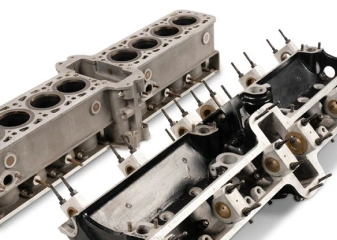
Automotive
CNC Milling ensures high precision and consistency in manufacturing engine components, transmission housings, and more, meeting the industry’s requirements for reliability.
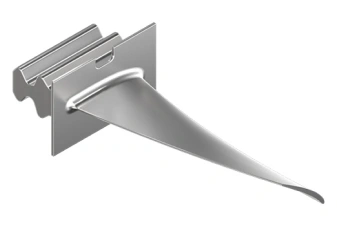
Aerospace
CNC milling is used to manufacture critical components for aircraft and spacecraft, handling high-strength materials and maintaining excellent mechanical properties.
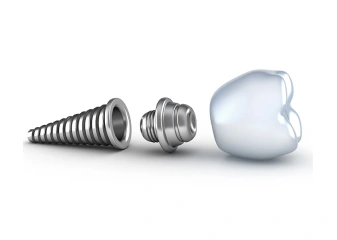
Medical
It’s essential for producing implants, surgical tools, and diagnostic equipment, ensuring precision and surface finish for biocompatible materials.
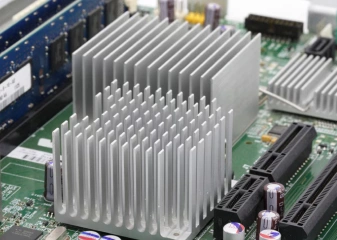
Electronics
CNC milling produces circuit boards and precision components, meeting the requirements for compact design and high performance in electronic devices.
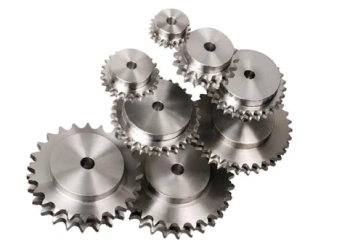
Energy
It’s widely used in the production of wind turbine components, turbine blades, and oil drilling equipment, ensuring long-term reliability and performance of energy equipment.
CNC Milling Gallery
3 Ways to Ensure Perfection
Standards
GENERAL TOLERANCE
For metals, the standard is ISO-2768 fH (fine)
For plastics, the standard is ISO-2768 mK (medium)
Metric threads tolerances:ISO 965-1 standard UN Threads Tolerances: ASME B1.1-2003 standard
knurling: ISO13444:2012 standard Our factory is ISO 9001:2015 certificated
Visual inspection and Protection
Constant visual inspection conditions
Quantification of cosmetic surface quality
Process requirements
Part cleaning and Protection
Quality Inspection Report
Inspection Confirmation
Dimensional confirmation
Appearance confirmation
Quality documentation
Try Prolean Now!
Technology Overview
What is CNC Milling?
CNC milling is an abbreviation for Computer Numerical Control milling. So, the milling operations are numerically controlled by the computers here. CNC milling machines, like cutting and drilling machines, use rotary tools to cut away at a workpiece into the desired shape. Because a computer controls the movement of tools and other machine parts, there will be no human error, resulting in precise parts with tight tolerance. CNC milling can work with any manufacturing material, from steel to plastic.
The instructions for part creation are generated when we load the CAD file into the CNC milling machines. The computer controls the coordinates and positions along with the tool’s movement. CNC milling is used in many industries Such as automotive, aerospace, defense, Medical, and more.
Principle of CNC Milling
The milling process begins with the positioning of the workpiece and tools. Next, the workpiece is inserted into a holding device, and tools are inserted into the spindle. The CAD file determines the milling direction (horizontal or vertical). Once the tool and workpiece placement is complete, a program is edited and executed. The tools are now moved to create the desired shape based on the instructions.
The milling cutter tools move through the multiple axes to create the parts where several operations other than cutting might be needed, such as drilling holes and slots. A milling cutter can move along multiple axes and make several shapes, slots, holes, and other impressions. Milling machines usually have four directions for operations X, Y, Z, & W. The horizontal movement is represented by X and Y. The Z axis represents vertical movement, whereas the W axis represents diagonal movement across a vertical plane.
Different types of CNC Milling
There are four common types of CNC milling operations. Plane, face, angular, and form milling are all options. These milling operations are selected during manufacturing based on the work piece’s shape requirements.
Face milling uses a tool with teeth on its periphery and face. The peripheral teeth cut the workpiece, and the face teeth finished the surface. The plane of the workpiece is positioned at a right angle to the tool axis.
In Angular milling, the cutting tool is placed in a way that makes a specific angle to the workpiece surface to create a design-angle cut, such as a groove or a dovetail. It is generally applicable when Milling planes are neither parallel nor perpendicular to the tool axis.
The milling of irregular surfaces like curve planes is accomplished by form milling with the help of a special cutter called a formed cutter. Various complex parts needed to be created convex, concave, hemispherical, or other complicated shapes, Thanks to formed milling.
Plain milling, also known as surface milling, is the most commonly used type of milling in which the milling cutter axis is parallel to the surface being milled. It is the best method when a large amount of material needs to be removed.
See How Customers Dig Us
We were working on some stainless steel turning projects and contacted Polean to outsource a couple of parts. We sent our design and they made the parts. Those were exactly to needed specifications. Our factory will come back for other projects.
-Paul Campbell, TechFab Innovations
The ordered milling gears were as per our drawing. The surface treatment also looks nice. Once we get feedback from our vendors, I will contact you for subsequent batches. We might need to modify the teeth size and other parameters.
-Jennifer Baker, Senior R&D Engineer
ProleanTech's Mill Turn services have consistently delivered exceptional results for our custom heat sinks. We appreciate their professionalism and commitment to timely delivery.
-Jason Adams, Director of Operations at CastMaster Technologies
Their services of machining justify the name “ProLean” . Engineers and operators are pro at technology and seems like they have mastered the lean manufacturing principles.
-Hannah Murphy, Head of Tooling Engineering at PrecisionMold Works
Thank you. The engineers really go the extra step to set up the custom tooling for our Mechanical coupling components. We will also order some other CNC-turned parts for our new project.
-Richard Green, MachiningPro Labs
Proleantech CNC turning services exceeded my expectations. They send me to inspect my small steel parts before the full-scale run. The precision and exact specifications of the final pieces were flawless. I'll recommend and return.
-Victoria Harris, Product Development Engineer
Get Your Parts Made Today
All uploads are secure and confidential.

